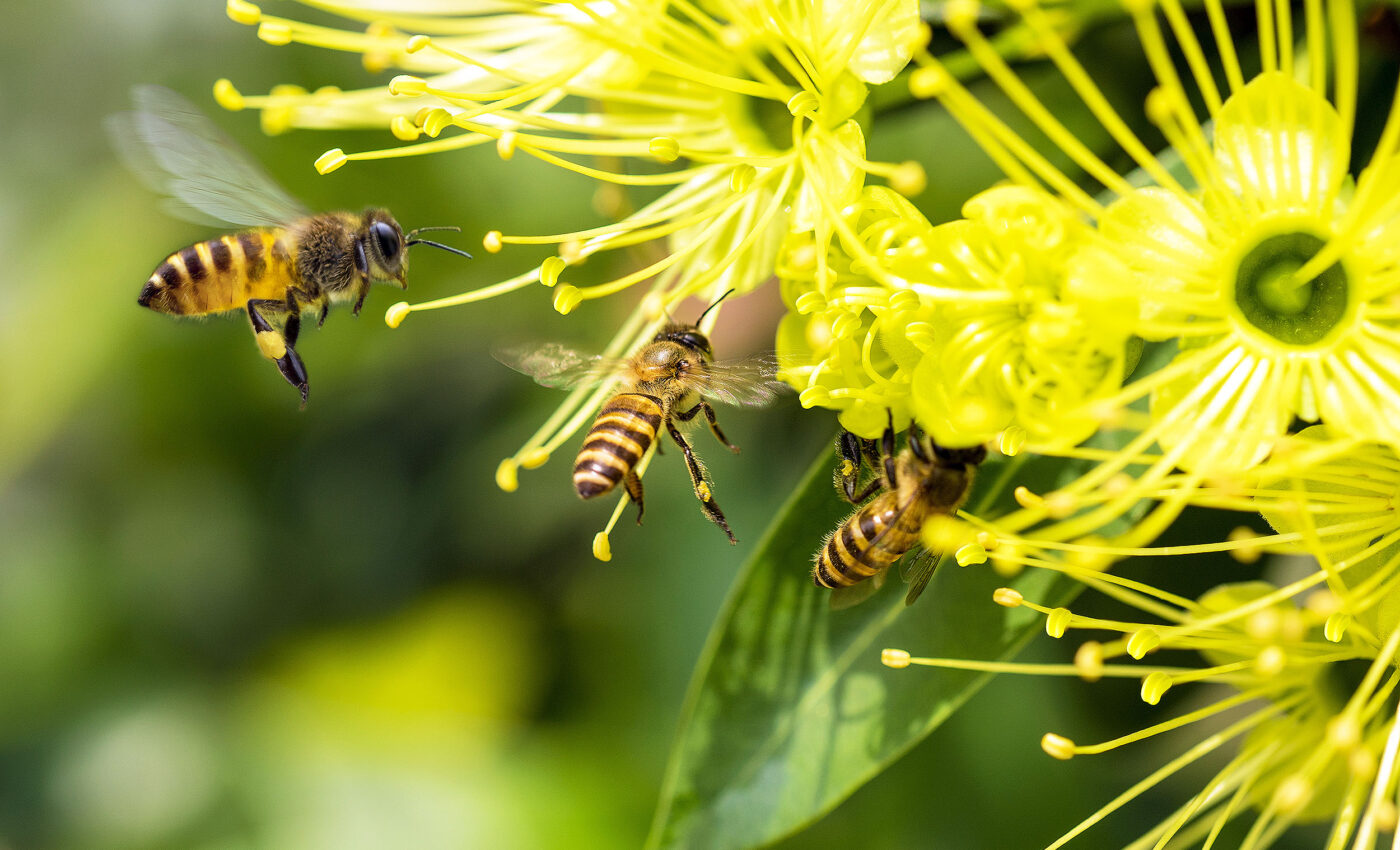
Pesticides disrupt bees’ sense of smell and social signals
It’s a well-established fact that pesticide sprays pose a significant threat to honey bees. However, recent research has shed light on a less known aspect of this peril — the impact of such sprays on bees’ sense of smell, with potential consequences on their vital social interactions.
Chemical communication in bee colonies
Honey bees are part of highly dynamic communities where communication is key. They rely heavily on chemical signals, known as pheromones, to perform essential colony functions.
Nurse bees, tasked with nurturing future queens and worker bees, use these pheromones to monitor larvae in the darkness of the hive.
Larvae emit specific pheromones to signal their need for food, while worker bees produce alarm pheromones to alert the colony to danger. If these chemical cues are distorted or not perceived accurately, the entire colony’s survival can be at stake.
Insecticides, pesticides and bees
For years, scientists have been aware of the declining bee populations since 2007, with insecticides being a major concern. May Berenbaum, a respected professor of entomology at GEGC/IGOH, highlights a surprising twist in this saga.
“For many years, it was assumed that fungicides do not have an adverse impact on insects because they are designed for fungal targets,” Berenbaum explains. “Surprisingly, in addition to insecticides, fungicides also have an adverse effect on bees and combining the two can disrupt colony function.”
The problem has been particularly evident in almond orchards, which host two-thirds of U.S. honey bees annually. Here, pesticide sprays often include adjuvants — substances added to increase the efficacy of insecticides.
These adjuvants, though traditionally viewed as harmless, have not undergone the rigorous safety testing that other insecticidal agents have.
Berenbaum’s recent findings are alarming. “Recently, researchers have shown that adjuvants alone or when used in combination with fungicides and insecticides are toxic to bees,” Berenbaum said.
Investigating the impact of pesticides on bees
The health of nurse bees, crucial for producing healthy queens, is particularly jeopardized by these chemical combinations.
Berenbaum emphasizes the gravity of this issue, stating, “The health of the queens is paramount,” she said. “If healthy queens are not produced, the colony can suffer.”
To delve deeper, researchers conducted an experiment using the adjuvant Dyne-Amic, the fungicide Tilt, and the insecticide Altacor.
They divided bees into four groups, exposing each to different treatments involving these chemicals. The bees’ antennae were then tested for their response to mimic brood and alarm pheromones using a technique known as electroantennography.
Ling-Hsiu Liao and Wen-Yen Wu, members of the Berenbaum lab, discovered that nurse bees consuming pollen contaminated by these chemicals showed altered responses to certain pheromones.
This finding implies that commonly used pesticides can interfere with honey bee communication, disrupting their crucial social cues.
More research is needed
However, the exact mechanisms behind how these chemicals affect bees’ sensory responses remain unclear.
“There are many possible explanations for how consuming these chemicals can affect the sensory responses of bees,” Liao said. “The antenna detects and triggers the response to olfactory signals. In this study we did not look at what other changes are triggered, particularly changes in behavior.”
The team aims to further investigate the molecular pathways affected by these chemicals and to test other pesticide mixtures. Their goal is to provide insights that could help beekeepers better protect their colonies.
In summary, this study is a crucial reminder of the intricate and delicate balance within bee colonies and how human practices can inadvertently disrupt it.
As we continue to unravel the complexities of bee communication and its susceptibility to external chemicals, we also uncover the urgent need to reevaluate and possibly reform our agricultural practices for the preservation of these vital pollinators.
The full study was published in the journal Scientific Reports.
—–
Like what you read? Subscribe to our newsletter for engaging articles, exclusive content, and the latest updates.
Check us out on EarthSnap, a free app brought to you by Eric Ralls and Earth.com.
—–













